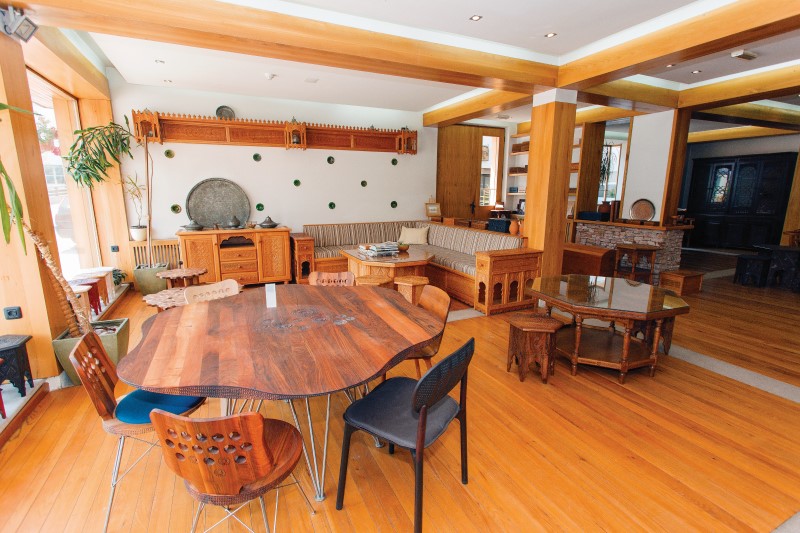Wood carving
Has a long tradition in Bosnia and Herzegovina, above all it is related to Konjic wood carving. Woodcarvings, which include furniture, sophisticated interiors and small decorative items, stand out with distinctive hand-carved motifs and an overall visual identity. Carving is an integral part of the local community’s culture, a measure of the beauty and comfort of a home interior and a tradition that creates a sense of community and belonging. Konjic woodcarvers use chisels without cutting handle and chisels with digging handle. On the basis of this kind of work, the following types of patterns were most often used by the Konjic wood-carvers when decorating objects: the Bosnian pattern, the Arabic pattern, while the deep pattern is the most difficult to process and here the individuality of the cultivator comes to the fore.
The wood-carving collections in Konjic are in three locations. The first collection of five items, on Varda Street, belongs to Armin Niksic and is located in a family home and office space. The second collection of 18 items belongs to Besim Niksic and is located in the family home and business premises of Adem Niksic on Varda Street. The third collection of 63 items, known as the Mulic Record Museum, together with a production workshop, is owned by Sejfudin Vila and is located in the family home on Varda Street. All three collections have been proclaimed as National Monuments of Bosnia and Herzegovina.
Wood carving from the town of Konjic in Bosnia and Herzegovina is listed on the UNESCO List of Intangible Cultural Heritage of Humanity. This was decided at a session of the Committee on the Safeguarding of the Intangible Cultural Heritage in South Korea on December 06, 2019. The nomination process for Konjic woodcarving began in 2014 in collaboration with the Federal Ministry of Culture and Sports and the local community in Konjic, which inherits this element. Konjic wood-carving is the second element of the intangible heritage from Bosnia and Herzegovina, which, after the serpentine needlework, was included on the Representative List of the World Intangible Cultural Heritage.


